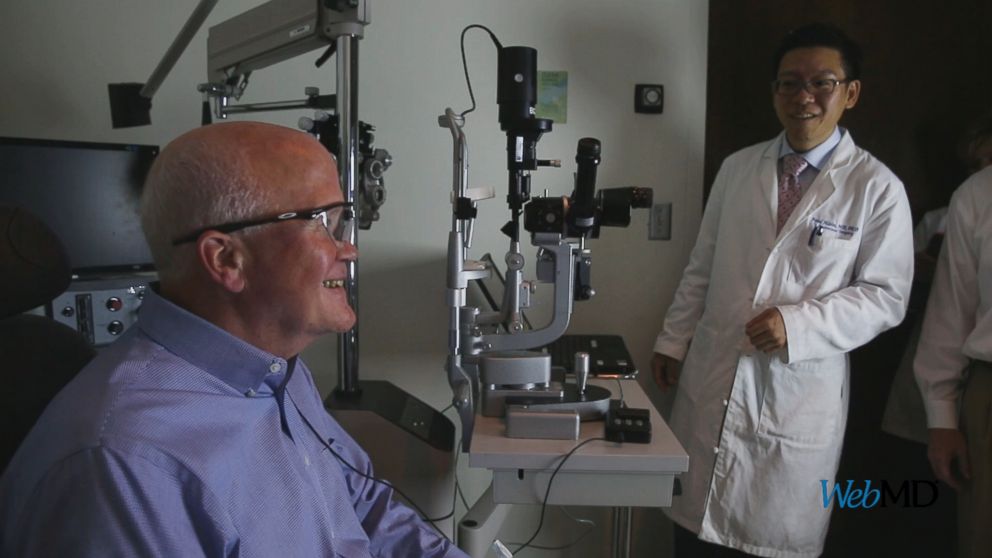Blind Man Regains Sight After 33 Years With 'Bionic Eye'
Larry Hester was 33 years old when he got horrible news: He was going blind.

— -- Larry Hester was 33 years old when he got horrible news.
“The ophthalmologist said, ‘You're going to go blind,’” Hester recalled of his diagnosis of retinitis pigmentosa, a genetic condition leading to retinal degeneration and causing severe, incurable vision problems. It can sometimes lead to blindness.
He had two young children and called the news devastating.
“It was like the wind got knocked out of me. It was tough,” Hester, now 67, told "Good Morning America’s" co-anchor, Robin Roberts.
Blindness came quickly. Soon, Hester lived his life in the dark. His wife, Jerry Hester, was by his side.
"I just couldn't imagine being married to a blind person. It was hard," Jerry Hester said.
For another 33 years, the Raleigh, North Carolina, couple coped, until a breakthrough came in 2014.
Called the Argus II Retinal Prosthesis System, it’s the world’s first FDA-approved device designed to restore vision to the blind. It’s being hailed as a bionic eye.
The device is only approved for use in people with retinitis pigmentosa, which affects about 100,0000 people in the United States.
Dr. Michael Smith, the chief medical editor of the website WebMD, explained how the device works to restore sight.
“It starts with electrodes implanted on the patient's retina,” he said. “And then the patient wears eyeglasses that has a video camera on it. That actually captures the images, sends them to a video processing unit that the patient wears, that then sends electrical impulses wirelessly back to the electrodes on the retina and then ultimately to the brain which allows them to decipher really light and dark. Not great vision, but spectacular vision for them.”
It’s impossible to tell exactly what the patient can see.
“It's not normal vision as you or I know it,” said Hester's retinal surgeon, Dr. Paul Hahn, of Duke University Eye Center. “But what they do get is crude series of flashes of lights in a pixelated fashion that allow them to make better sense of their surroundings.”
Hester was the first patient in North Carolina to receive the visual prosthesis at the Duke University Eye Center. In October, Hahn did a countdown -- “three, two, one” -- and hit the button to turn on the device for Hester.
“Can you see?” he asked Hester.
“Yes!” his patient replied, beaming.
Jerry Hester was overjoyed.
“Oh my goodness. Can I give him a kiss?” she asked.
Larry Hester remembered his emotions that day.
“It was so overwhelming. I think my head rocked back a little bit,” he said. “It's hard to put into words because, for the first time in 33 years, I'm seeing light.”
He acknowledged that his vision is “incredibly basic,” adding: “but it’s light and, in my case, sight.”
Larry Hester’s son-in-law recently rigged a set of Christmas lights around a basketball hoop. Video shows Larry shooting hoops at night.
“And so I was able to make about four out of seven baskets,” Larry said, smiling.
This is a sneak peak of one of five episodes in a new series by Rock’N Robin Productions and WebMD. The series, which premieres today, March 2nd, is called “WebMD’s Future of Health with Robin Roberts.” Rock’N Robin Productions, run by Robin Roberts, is an independent production company that creates a variety of original broadcast and digital content for ABC and other networks.



